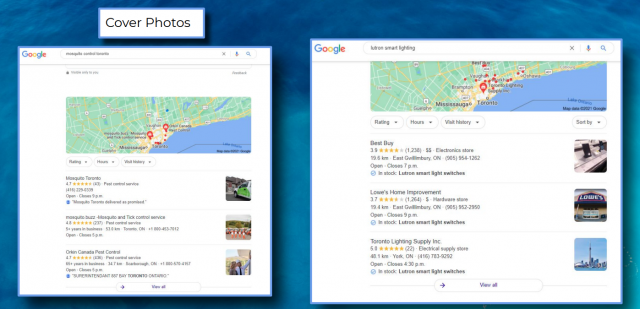Key Learnings from LocalU Advanced, August 2021
I’ll let you into a little secret.
If you’re super-duper into local SEO, and you’re not already attending LocalU Advanced you’re missing a trick. This is where the top minds and actual practitioners in the space get together and share ALL-NEW content including research, case studies, how-tos, and much, much more.
I got the chance to attend the last event on August 31, and, as always, I bloody loved it. So much that I wrote up the key takeaways from my favorite talks from Joy Hawkins, Rachel Anderson, Greg Gifford, Dana DiTomaso so that you can enjoy them too!
Joy Hawkins: Make Your Images Worth a Thousand WordsAh, I do love Sterling Sky’s Joy Hawkins, I always get some great takeaways any time I listen to her speak, and using images more effectively is something I’m always looking to upskill on!
Joy starts by summing up three objectives for having great images:
- Look better
- Rank better
- Get more leads
Marketers often forget to check how images are showing in mobile SERPs:

This doesn’t show for all queries—and not many people talk about these and how to get them. For the best photos on mobile:
1. Make sure with the images your head isn’t chopped off
2. Don’t use a ton of text on the image
3. Don’t use stock photos
4. Use it to highlight awards or coupons, for example:

5. Make sure the image is a square
6. Size doesn’t appear to matter
7. Make the image appear high up in the HTML of the page to have a better chance of it showing in the SERP
Joy uses BrightLocal’s Local Search Rank Checker to keep a record of the mobile results as screenshots. She uses it to identify opportunities in the SERP where competitors have photos showing and her clients do not for multiple keywords.
Joy noticed when she was conducting her research that there were two different types of ‘Image 3 packs’.
The first shows when you add a query, and Google chooses to show you photos that match this—like in this example for Michelin tires where Google chooses to show photos of tires in the SERP:

The second type shows the cover photo instead. This second type formed the majority of the results for Joy’s research:

If you’re struggling to get Google to show the cover photos you want, Joy recommends trying Ben Fisher’s method.
(A personal note: If you’re situated in one of the countries where Google chooses to show an ‘image result’ rather than your profile photo this won’t work (usually EU and the UK). You can read more about that here.)
Let’s move onto ‘Rank better’Let’s talk about ‘geotagging’. Joy quotes Joel Headley when he says, “The ‘tagging’ is happening upon upload. It doesn’t matter if the meta data exists.”
Joy wanted to test this. She tracked 15 keywords and saw zero change in rankings when she geotagged photos she uploaded to Google My Business.
Next, she tested geotagging photos on businesses’ websites. For the ones where they were able to tag the photos and upload them into the CMS, there weren’t any changes to rankings (WordPress allowed them to do so, a custom CMS a client was using stripped them out).
TAKEAWAY – don’t bother!
After this, Joy investigated the impact adding relevant photos had on local (map pack) ranking. Photos that were relevant to the search terms being tracked were added into GMB. However, nothing happened in terms of ranking changes.
Next, the photos were added onto the website page that the GMB listing was linking to. For example, photos of tires were added to a page, but tires weren’t mentioned anywhere else on the page (including in HTML or meta data). Within three days they saw a slight ranking increase in the local organic listings—this grid used to be all red and then it changed to this:

When looking at the SERP Joy found that Google was using the image alt text as a justification for that business:

They replicated this across a couple of clients and saw very slight ranking increases.
Next, it was time to test the impact of images on local organic rankings. Joy added a relevant image with alt text to the top of a page about lawn care. As well as grabbing the featured snippet, the page also saw a little bump in rankings.
However—don’t get TOO excited—she saw the result with a lawn care client, but not with a law client.
And finally, let’s look at ‘get more leads’Joy showed the example of a dentist. Adding images to a page that previously hadn’t had an image saw an increase in traffic to the site via Google Images:

When they looked at the increase in traffic they extrapolated (in Google Analytics) that the bump in organic traffic from image search represented a big chunk of cash in terms of conversions:

from My RSS Feed https://bit.ly/3CsGcMx
via gqrds
Comments
Post a Comment